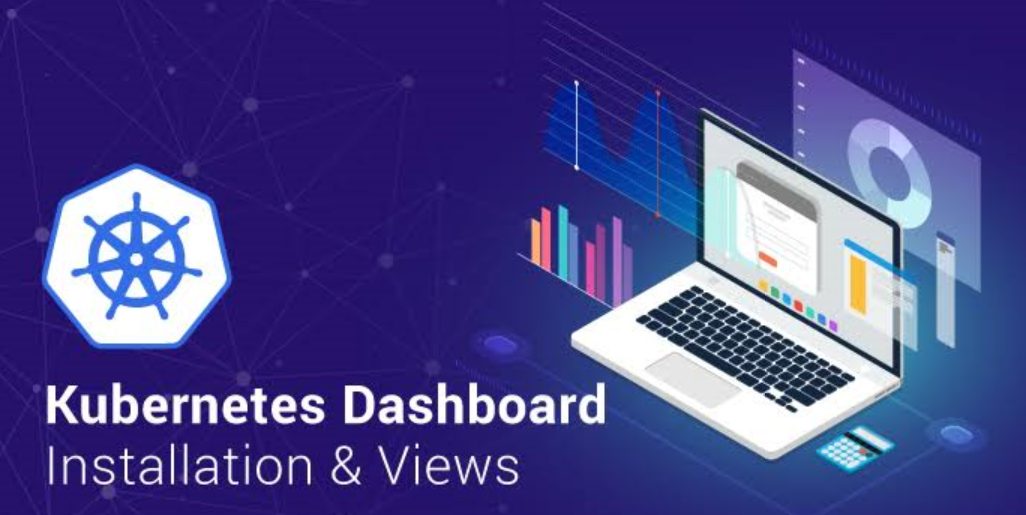Kubernetes dashboard is a service running on master node which provide dashboard features to deploy application and services in kubernetes cluster using GUI dashboard, by default it is having “CluterIP” service type.
You can easily access Kubernetes dashboard within cluster with service type “ClusterIP” but this dashboard will not be accessible outside cluster.
To make dashboard accessible externally, we have to edit kubernetes-dashboard service file with below command.
# kubectl -n kube-system edit service kubernetes-dashboard
# Please edit the object below. Lines beginning with a '#' will be ignored,
# and an empty file will abort the edit. If an error occurs while saving this file will be
# reopened with the relevant failures.
#
apiVersion: v1
kind: Service
metadata:
annotations:
kubectl.kubernetes.io/last-applied-configuration: |
{"apiVersion":"v1","kind":"Service","metadata":{"annotations":{},"labels":{"k8s-app":"kubernetes-dashboard"},"name":"kubernetes-dashboard","namespace":"kube-system"},"spec":{"ports":[{"port":443,"targetPort":8443}],"selector":{"k8s-app":"kubernetes-dashboard"}}}
creationTimestamp: "2019-11-20T19:46:51Z"
labels:
k8s-app: kubernetes-dashboard
name: kubernetes-dashboard
namespace: kube-system
resourceVersion: "13744048"
selfLink: /api/v1/namespaces/kube-system/services/kubernetes-dashboard
uid: 7a6ef000-c1f3-4d0d-b543-de16a5c47111
spec:
clusterIP: X.X.X.X
externalTrafficPolicy: Cluster
ports:
- nodePort: 31630
port: 443
protocol: TCP
targetPort: 8443
selector:
k8s-app: kubernetes-dashboard
sessionAffinity: None
type: NodePort ### Change clusterIP to NodePortstatus:
loadBalancer: {}
After editing you should be able to see the mapped Clusster IP and Type as NodePort to the kubernetes dashboard

# lsof -i tcp:32414
COMMAND PID USER FD TYPE DEVICE SIZE/OFF NODE NAME
kube-prox 3440 root 7u IPv6 32584 0t0 TCP *:32315 (LISTEN)
Now, dashboard will be accessed using https://master-node-ip:port and provide token to sign-in to dashboard
If everything is running correctly, you should see the dashboard login window.
Select the token authentication method and copy your admin token into the field below. Then click the Sign in button.
To get the token to login into Kubernetes dashboard, please use below commands
$ kubectl -n kube-system get secret
# All secrets with type 'kubernetes.io/service-account-token' will allow to log in.
# Note that they have different privileges.
NAME TYPE DATA AGE
deployment-controller-token-frsqj kubernetes.io/service-account-token 3 22h
$ kubectl -n kube-system describe secret deployment-controller-token-frsqj
Name: deployment-controller-token-frsqj
Namespace: kube-system
Labels: <none>
Annotations: kubernetes.io/service-account.name=deployment-controller
kubernetes.io/service-account.uid=64735958-ae9f-11e7-90d5-02420ac00002
Type: kubernetes.io/service-account-token
Data
====
ca.crt: 1025 bytes
namespace: 11 bytes
token: eyJhbGciOiJSUzI1NiIsInR5cCI6IkpXVCJ9.eyJpc3MiOiJrdWJlcm5ldGVzL3NlcnZpY2VhY2NvdW50Iiwia3ViZXJuZXRlcy5pby9zZXJ2aWNlYWNjb3VudC9uYW1lc3BhY2UiOiJrdWJlLXN5c3RlbSIsImt1YmVybmV0ZXMuaW8vc2VydmljZWFjY291bnQvc2VjcmV0Lm5hbWUiOiJkZXBsb3ltZW50LWNvbnRyb2xsZXItdG9rZW4tZnJzcWoiLCJrdWJlcm5ldGVzLmlvL3NlcnZpY2VhY2NvdW50L3NlcnZpY2UtYWNjb3VudC5uYW1lIjoiZGVwbG95bWVudC1jb250cm9sbGVyIiwia3ViZXJuZXRlcy5pby9zZXJ2aWNlYWNjb3VudC9zZXJ2aWNlLWFjY291bnQudWlkIjoiNjQ3MzU5NTgtYWU5Zi0xMWU3LTkwZDUtMDI0MjBhYzAwMDAyIiwic3ViIjoic3lzdGVtOnNlcnZpY2VhY2NvdW50Omt1YmUtc3lzdGVtOmRlcGxveW1lbnQtY29udHJvbGxlciJ9.OqFc4CE1Kh6T3BTCR4XxDZR8gaF1MvH4M3ZHZeCGfO-sw-D0gp826vGPHr_0M66SkGaOmlsVHmP7zmTi-SJ3NCdVO5viHaVUwPJ62hx88_JPmSfD0KJJh6G5QokKfiO0WlGN7L1GgiZj18zgXVYaJShlBSz5qGRuGf0s1jy9KOBt9slAN5xQ9_b88amym2GIXoFyBsqymt5H-iMQaGP35tbRpewKKtly9LzIdrO23bDiZ1voc5QZeAZIWrizzjPY5HPM1qOqacaY9DcGc7akh98eBJG_4vZqH2gKy76fMf0yInFTeNKr45_6fWt8gRM77DQmPwb3hbrjWXe1VvXX_g


You will then be greeted by the overview of your Kubernetes cluster.

Other Related Topics




It works well from the browser on the same machine as the cluster is installed, but from other workstations dashboard doesn’t work, there are a lot of error in notifications:
statefulsets.apps is forbidden: User “system:anonymous” cannot list resource “statefulsets” in API group “apps” in the namespace “default”